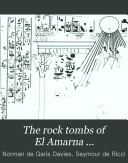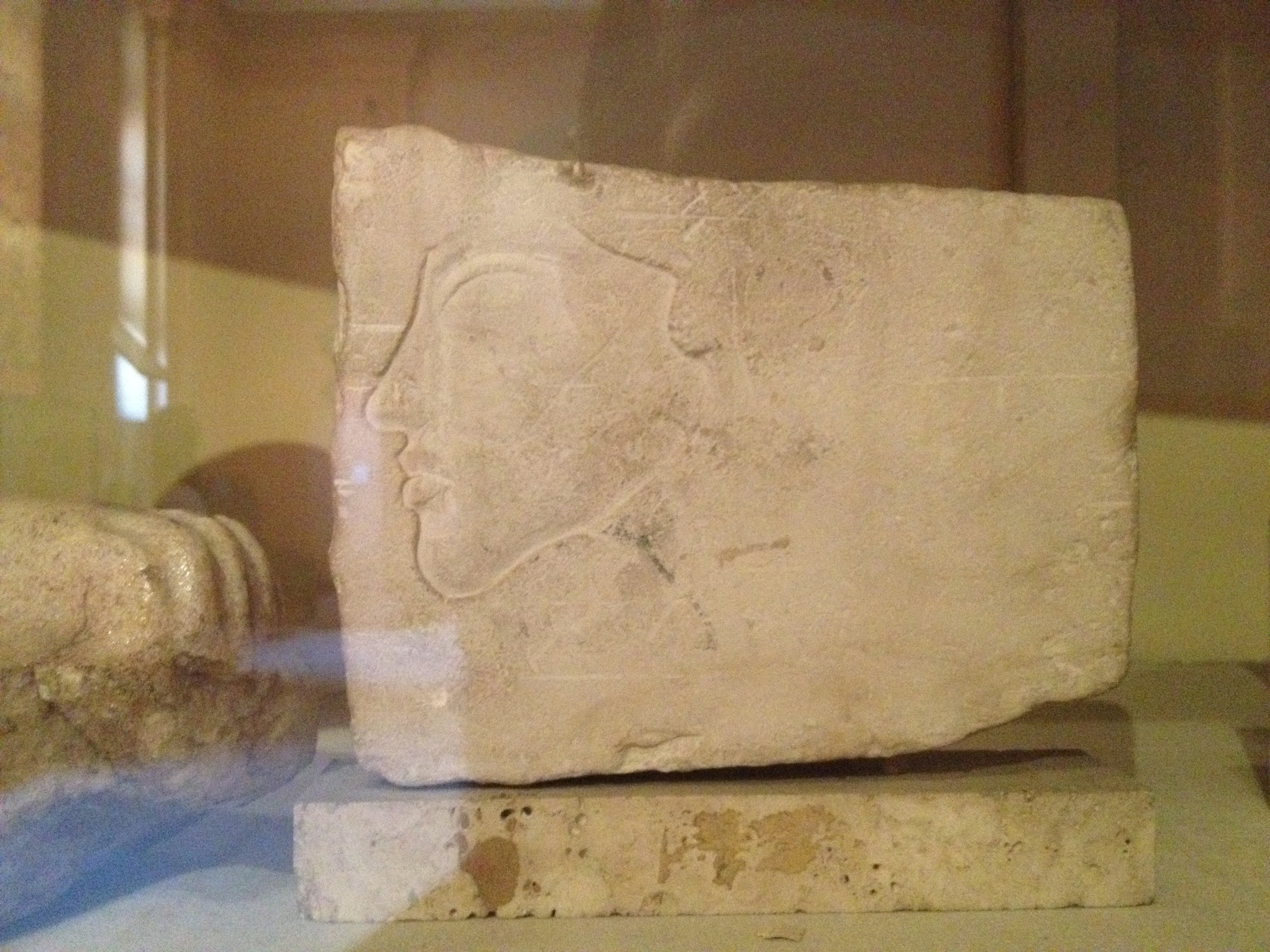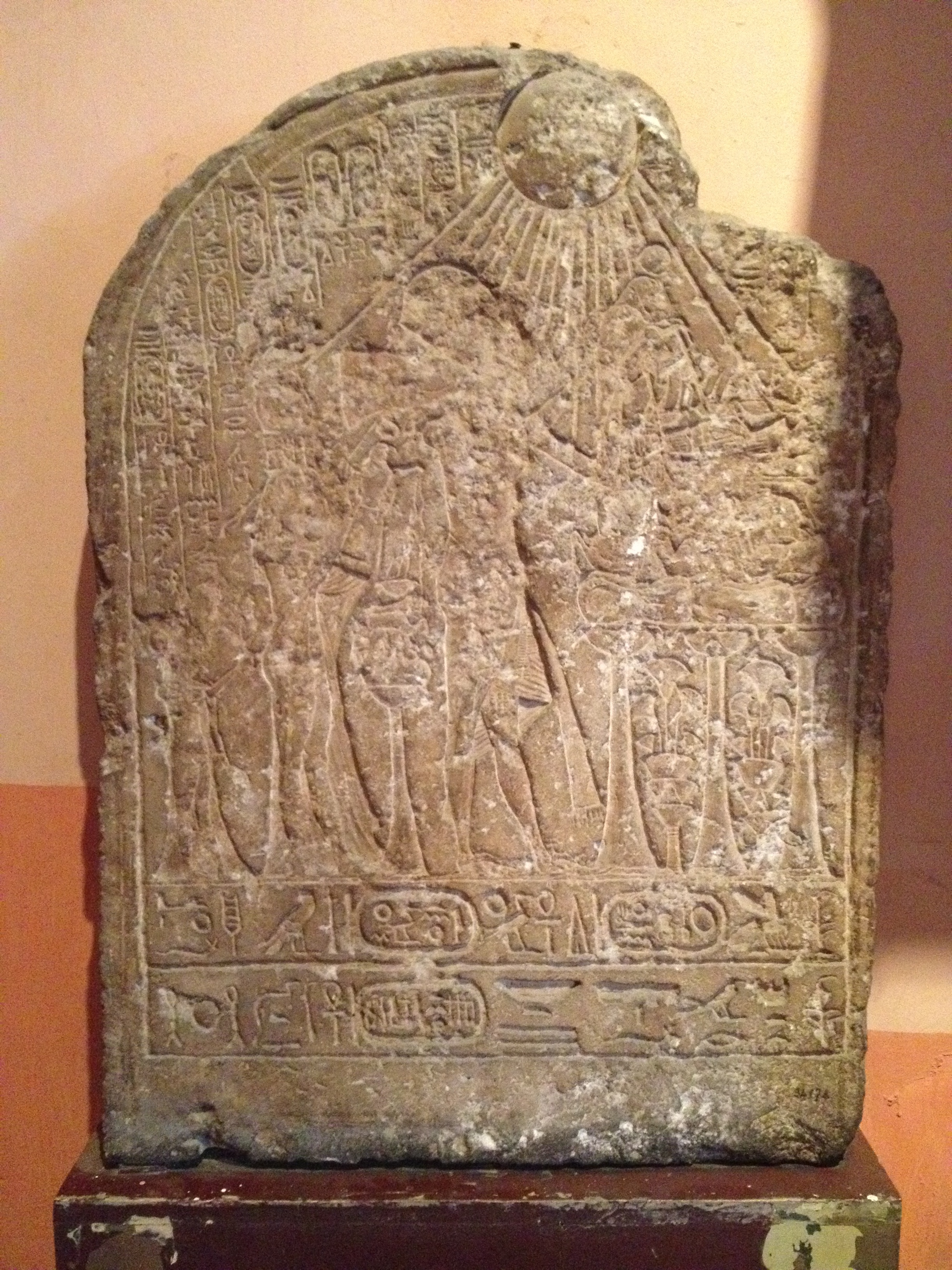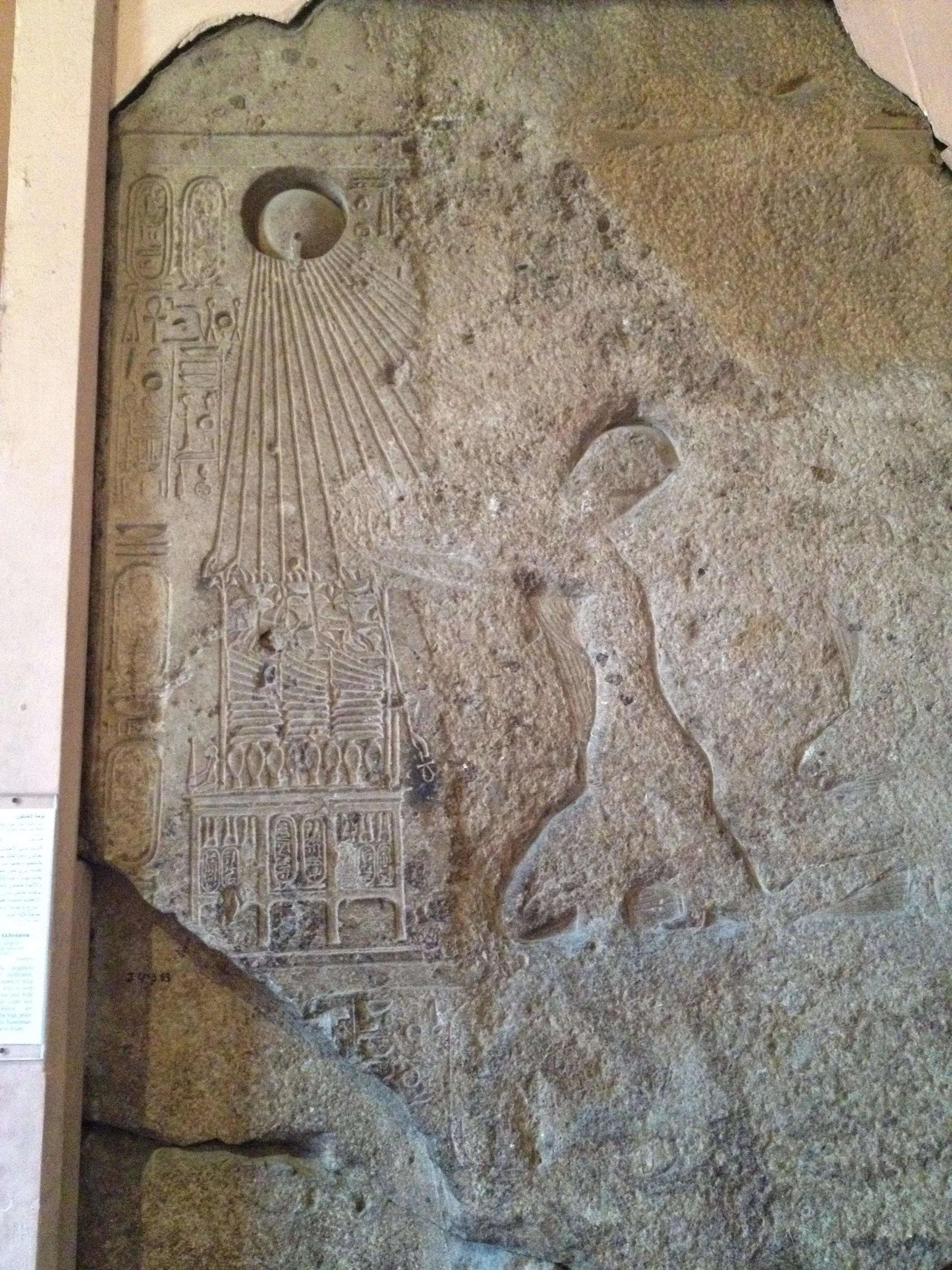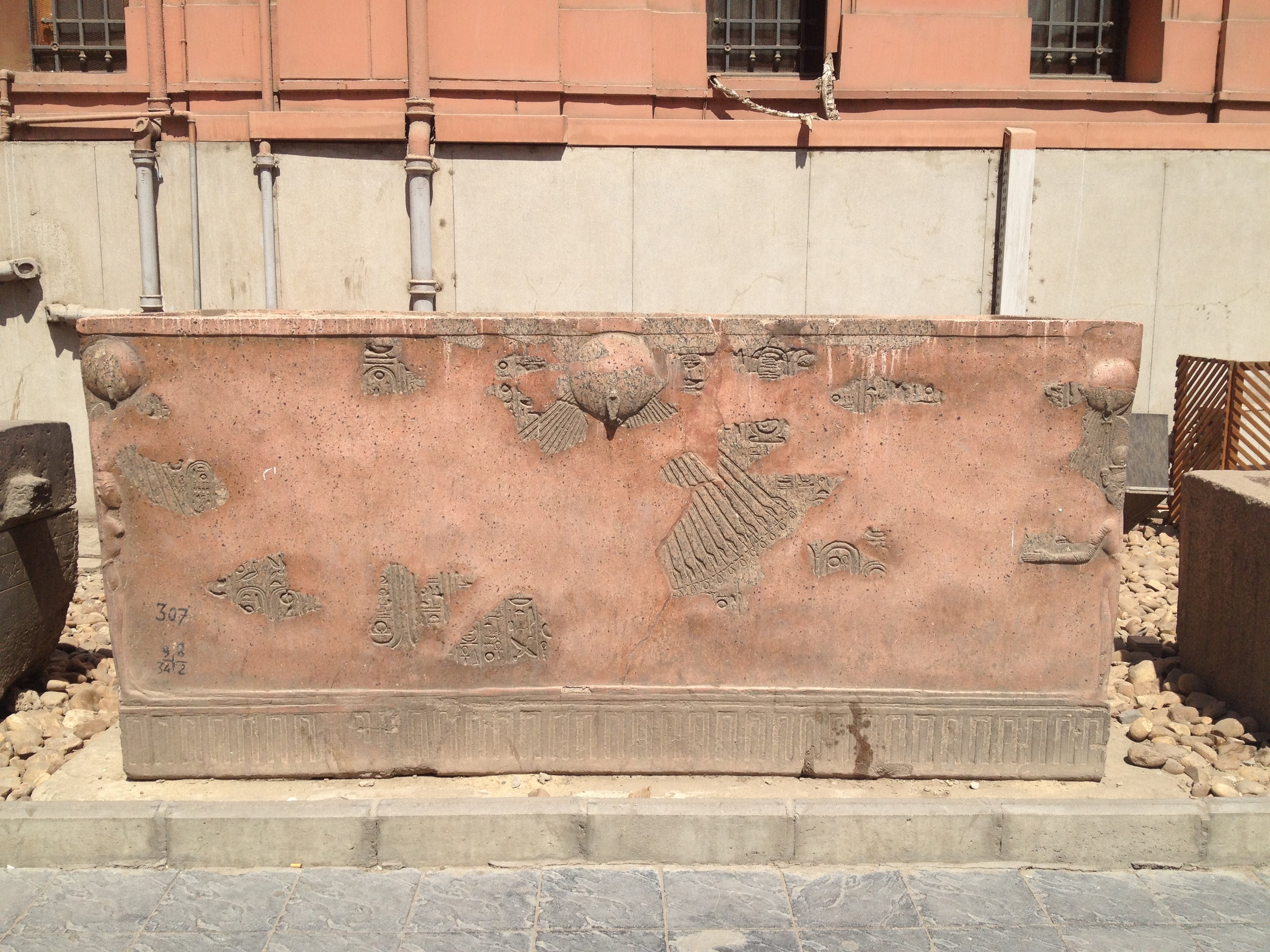Akhenaten, Nefertiti and King Tut - All A Fake Hoax?
Statue of Akhenaten at the Egyptian Museum - photo by Jesse Waugh
Jesse Waugh's Unfinished Operas
I wanted to believe. I even began composing an opera called Nefertiti (see here). I ventured far and wide in search of Amarna-era artifacts - to Egypt, Berlin, New York, Paris, Cambridge, Oxford and more. I sent off for a physical DVD of Philip Glass' Ahknaten when I could barely even find a way to play DVDs. I followed as archeological developments unfolded at Amarna. I was in love with Atenism, the Great Hymn to the Aten, and the notion of a true rebel king.
Philip Glass' Akhnaten
Then I went to Knossos on Crete two weeks ago, and deduced that "Minoan culture" was one giant scam, and then I remembered having read articles a few years ago about the possibility that the famous bust of Nefertiti, which I'd seen in Berlin, might be an Art Nouveau fake. It was then that Amarna started unravelling for me. Following is my conjecture on the question of the authenticity of the Amarna heresy, for anyone who's interested. Honestly, I find writing about this unenjoyable, because I really loved the subject of Akhenaten, Nefertiti, King Tutankhamun and the Amarna myth.
It's easiest for me if I just go down a list of bullet pointed quotes from Wikipedia articles and other websites on Amarna, Akhenaten, Nefertiti, etc., and give my thoughts on them. Although it may get repetitive, it is the most concise and straightforward method (my answers are marked with a JW) - so here we go:
Amarna
Amarna
From https://en.wikipedia.org/wiki/Amarna:
The first western mention of the city was made in 1714 by Claude Sicard, a French Jesuit priest who was travelling through the Nile Valley, and described the boundary stela from Amarna. As with much of Egypt, it was visited by Napoleon's corps de savants in 1798–1799, who prepared the first detailed map of Amarna, which was subsequently published in Description de l'Égypte between 1821 and 1830.[24]
JW: Fine but what are the descriptions and do any drawings exist of the boundary stelae described by Claude Sicard? Do they refer to or show the Aten with its extending hands?
After this European exploration continued in 1824 when Sir John Gardiner Wilkinson explored and mapped the city remains. The copyist Robert Hay and his surveyor G. Laver visited the locality and uncovered several of the Southern Tombs from sand drifts, recording the reliefs in 1833. The copies made by Hay and Laver languish largely unpublished in the British Library, where an ongoing project to identify their locations is underway.[25]
JW: There are tombs carved out of cliffs all the way up and down the Nile (see my movie Nile Drift), what was in the tombs discovered by Hay and Laver? Are there drawings showing stylized Akhenaten and Nefertiti and the Aten with reaching hands in those unpublished copies languishing in the British Library?
The Prussian expedition led by Richard Lepsius visited the site in 1843 and 1845, and recorded the visible monuments and topography of Amarna in two separate visits over a total of twelve days, using drawings and paper squeezes. The results were ultimately published in Denkmäler aus Ägypten und Äthiopien between 1849 to 1913, including an improved map of the city.[24] Despite being somewhat limited in accuracy, the engraved Denkmäler plates formed the basis for scholastic knowledge and interpretation of many of the scenes and inscriptions in the private tombs and some of the Boundary Stelae for the rest of the century. The records made by these early explorers teams are of immense importance since many of these remains were later destroyed or otherwise lost.
JW: What did Lepsius record? Does Denkmaler include any drawings showing stylized Amarnan figures or drawings / descriptions of the Aten with extending hands? How are they "limited in accuracy"? -- is that a clue that they do not support the current mythos surrounding Amarna? Many of the Amarna remains were "later destroyed or otherwise lost"? How? Amarna is out in the middle of nowhere -- who destroyed them or how / why were they destroyed?
In 1887 a local woman digging for sebakh uncovered a cache of over 300 cuneiform tablets (now commonly known as the Amarna Letters).[26] These tablets recorded select diplomatic correspondence of the Pharaoh and were predominantly written in Akkadian, the lingua franca commonly used during the Late Bronze Age of the Ancient Near East for such communication. This discovery led to the recognition of the importance of the site, and lead to a further increase in exploration.[27]
JW: 1887 - okay that puts us firmly in the era of what could be termed archeological confabulation - i.e. by the likes of Evans and Carter. 300 cuneiform tablet records of diplomatic correspondence - that sounds awfully convenient. This is what "led to the recognition of the importance of the site".
Alessandro Barsanti
Between 1891 and 1892 Alessandro Barsanti 'discovered' and cleared the king's tomb (although it was probably known to the local population from about 1880).[28] Around the same time Sir Flinders Petrie worked for one season at Amarna, working independently of the Egypt Exploration Fund. He excavated primarily in the Central City, investigating the Great Temple of the Aten, the Great Official Palace, the King's House, the Bureau of Correspondence of Pharaoh and several private houses. Although frequently amounting to little more than a sondage, Petrie's excavations revealed additional cuneiform tablets, the remains of several glass factories, and a great quantity of discarded faience, glass and ceramic in sifting the palace rubbish heaps (including Mycenaean sherds).[27] By publishing his results and reconstructions rapidly, Petrie was able to stimulate further interest in the site's potential.
JW: Why was Petrie working independent of the Egypt Exploration Fund? "Although frequently amounting to little more than a sondage" - so he was just surveying mudbrick foundations? Couldn't those be just local dwellings or even Roman or medieval compounds? Okay more cuneiform tablets. Glass factories mean little, but the inclusion of "Mycenaean sherds" is rather convenient to establish international commerce between Akhetaten and the greater Mediterranean world. Rapid publication of results and reconstructions sounds desperate, but it seems to have worked.
Side note: Look at this blue faience seal ring (pictured below) attributed to Akhenaten - since when have you seen a ceramic seal in the ancient world? Moreover, it is molded - not carved - so how could it effectively emboss?
Norman de Garis Davies with wife
The copyist and artist Norman de Garis Davies published drawn and photographic descriptions of private tombs and boundary stelae from Amarna from 1903 to 1908. These books were republished by the EES in 2006.
JW: Here we seem to have a some potentially valuable evidence. What do Davies' illustrations and photographs show? A cursory search yielded the following images:
That griffin drawn by Davies' wife Nina looks like a complete fabrication. Also, even if the Davies were honestly documenting what they saw, what they saw could have been fabricated and installed (by Petrie or anybody else) in the decades prior to their visiting Amarna.
One thing that really provokes my suspicion is the convenient defacing of the two central characters (ostensibly Akhenaten and Nefertiti) in the drawing shown in the last photo above - which was published in The Rock Tombs of Amarna. I believe it was well established by the time the Davies published their book that images of Hatshepsut had been defaced throughout Ancient Egypt by her successors. So it seems very convenient that a fresco should be discovered in Amarna showing Akhenaten and Nefertiti with an Aten. I believe that fresco is still in place in the so-called royal tombs at Amarna. So if it was indeed faked, the Davies may or may not have known about it when they made a drawing of it.
I think that iconography specifically of the Aten itself is key in determining the legitimacy of Amarna art. Also comparing the iconographical remnants of Amenhotep IV present at Thebes - where he is depicted on disassembled blocks with what is claimed to be Nefertiti - with those supposedly derived from Amarna (stelae, etc.) and found in King Tut's tomb (the throne) may cast some light on not only differences in content, but also significant differences in style, which art historians may be able to prove are irreconcilable.
Nefertiti Bust
In the early years of the 20th century (1907 to 1914) the Deutsche Orientgesellschaft expedition, led by Ludwig Borchardt, excavated extensively throughout the North and South suburbs of the city. The famous bust of Nefertiti, now in Berlin's Ägyptisches Museum, was discovered amongst other sculptural artefacts in the workshop of the sculptor Thutmose. The outbreak of the First World War in August 1914 terminated the German excavations.
Bust of Nefertiti
JW: Borchardt is a questionable character, right on par with Arthur Evans and Howard Carter. I won't go into the whole Nefertiti bust debate, because that has been well documented online, but suffice it to say that while I think the supposed bust of Nefertiti is an exquisite Art Nouveau masterpiece, I do not believe it is authentic.
From 1921 to 1936 an Egypt Exploration Society expedition returned to excavation at Amarna under the direction of T.E. Peet, Sir Leonard Woolley, Henri Frankfort, Stephen Glanville[29] and John Pendlebury. The renewed investigations were focused on religious and royal structures.
JW: This seems to be the onset of Anglospherical intelligence / culture creation entities beginning to create the Amarna myth for their own purposes - which purposes I shall endeavor to outline in the next paragraph. But the key here is obviously "religious and royal structures". NB - These men would have been able to witness and riff off of what they would have seen at Knossos.
Culture Creation Conspiracy
Consider for a moment that - according to the official narrative - Amarna / Akhetaten, Akhenaten, Nefertiti and Tutankhamun were all "lost in time" until roughly the 1890s. Here's what I'm guessing: The culture creators (Tavistock Institute, Sigmund Freud, et al) - aside from desiring to displace Greco-Roman classicism with a more 'progressive' (read Marxist) historical cultural ideology - wanted to inject a proto-Judaic (Hyksos) pharaonic dynasty into Egyptian history, and they found a hole in the record after Amenhotep III which was a perfect place to put it (not to mention it could be placed perfectly around the year 1333 BC - an incredibly auspicious number in numerology). The main purpose was to stake a claim for monotheism. But it would also justify the future coming of the New Messiah / Moshiach in the form of what I call The Sacred Hermaphrodite (which is my own personal deity - see my video entitled The Sacred Hermaphrodite) - i.e. Zion (Isisosiris). I refer to Akhenaten being portrayed with womanly hips and breasts.
I believe that Yuya and Thuya were Hyksos (proto-hebraics), and that their presence close to the family of Amenhotep III indicates that by the 18th Dynasty the Hyksos had become intermingled with Egyptian royalty. So it's possible that Amenhotep IV really did break away from Egyptian religious tradition -- but it seems the case that that era in history was all but completely erased from the record -- so that leaves open the potential for an entirely artificial 20th century narrative to be constructed in its place. - That's what I believe is the case with all of the Amarna artifacts.
Consider this: what if in Abrahamic scriptures there exists a trail indicating Hyksos involvement in Egyptian politics from Joseph (Yuya?) onwards - and at some point referring especially to the Exodus? Would there not be some motive to legitimate this history?
The Stylistic Idiosyncrasy of Amarnan Art
All the above conjecture and postulation aside, the most damning evidence of an Amarnan conspiracy, as it were - i.e. an artificial construction of a fictional Amarna culture to be passed off as real history - is the ugly, sloppy, non-Egyptian, deformed and hermaphroditic art ascribed to the rule of Akhenaten. Survey the photos in the gallery below for a taste of what I'm referring to. I managed to sneak those shots at the Egyptian Museum in Cairo - only being accosted by a security guard once.
Although the "Amarna style" - as it is called - can be somewhat enjoyable in its flightiness, it is genuinely ugly. And aside from its hideous and amateurish depictions of deformed quasi-hermaphroditic bodies - replete with sinuous, writhing fingers pointing in every direction - it also displays something more disturbing - an apparent attempt to work in distorted stereotypes of Jewish facial characteristics, which have been subsequently passed off as allusions to Marfan's syndrome.
How is it that this "Amarna style" comes into being suddenly with Amenhotep IV's break from tradition, and disappears as soon as he does? That is a historical anomaly to say the least.
Here's what Wikipedia has to say about it
The Amarna art-style broke with long-established Egyptian conventions. Unlike the strict idealistic formalism of previous Egyptian art, it depicted its subjects more realistically. These included informal scenes, such as intimate portrayals of affection within the royal family or playing with their children, and no longer portrayed women as lighter coloured than men. The art also had a realism that sometimes borders on caricature.
So there is this quick and drastic break from millennia of rigid Egyptian artistic formalism, and then suddenly there is this loose, free-flowing, naturalistic and familial, Belle Epoque style, and then back to formalism for another 1300 years? And the bust of Nefertiti - how does that fit in as it's explicitly Art Nouveau? And the generic, quasi-neoclassical style employed in the design of the artifacts "discovered" in the tomb of King Tut - do all these styles jibe?
Didn't the Greeks invent naturalism nearly a millenium later? What sort of art history is this?
If you look at the following images (taken by me in a clandestine manner at the Egytian Museum in Cairo) with an open eye and mind - and analyze the style of them all - you may notice that they are decidedly un-Egyptian, and look like they were carved during the Belle Epoque by someone with atrocious taste.
Knossos and Minoan Culture and Civilization
This brings us to Knossos and so-called Minoan civilization and culture on Crete. I had the fortune to visit Knossos and the Heraklion Archeological Museum a couple of weeks ago. And boy did it open my eyes.
I won't get into debunking Knossos and Minoan culture here, because it has already been done satisfactorily. Check out the following articles for reference:
Snake Goddesses, Fake Goddesses: http://archive.archaeology.org/0101/abstracts/goddess.html
The Minoan City of Knossos – Myth or Reality? http://packmeto.com/the-minoan-city-of-knossos-myth-or-reality/
The Curious Phaistos Disc – Ancient Mystery or Clever Hoax? https://lizleafloor.com/2014/09/24/the-curious-phaistos-disc-ancient-mystery-or-clever-hoax/
Enduring Fictions of Late Victorian Fantasy: Sir Arthur Evans and the Faience ‘Goddesses’ from Minoan Crete: https://www.academia.edu/4616032/Enduring_Fictions_of_Late_Victorian_Fantasy_Sir_Arthur_Evans_and_the_Faience_Goddesses_from_Minoan_Crete
And most damningly:
Archaeology and the Truth of Man's Prehistory: http://www.schillerinstitute.org/fid_97-01/fid_012_sjk_homer.html
Suffice it to say that Knossos is a complete fabrication by Arthur Evans and his Dutch and Swiss illustrator / artist lackeys. That "Minoan" culture with its incredible (and incredibly fake) frescos -which are nothing more than reconstituted, disingenuously concocted restoration fragments, extrapolated into a blend of Art Nouveau, Art Deco and early 20th century exotic futurism - as well as its snake goddesses, has been passed off as historical fact for the past century is what set me off reexamining the Amarna narrative.
Here are a few pics I took of Knossos - look at them closely. I left the Heraklion Archeological Museum wondering if any of the art displayed there was authentic.
King Tut
Lastly, I will put forth a few thoughts on Howard Carter and Lord Carnarvon's "discovery" of "the tomb of King Tutankhamun". First off, I will address the elephant in the room: If King Tut and his tomb are fakes then who paid for the 24 pounds of solid gold for the construction of his mask? Lord Carnarvon? It does seem extravagant - if it is indeed solid gold.
Tomb of King Tut - Baboons
Now that that's out of the way let's consider everything else. First off, I have been in Tut's tomb in the Valley of the Kings (I also ventured down the steps and peaked into KV55 - the tomb where they found the alleged bones of Akhenaten). The tomb of King Tut is very awkwardly placed at an outcrop in the Valley of the Kings. It is also very cramped in comparison to the other tombs I entered (the Egyptians running the place only let you in a limited number of the tombs, but I entered about five). It is also suspiciously, poorly laid out.
The weirdest thing about Tut's tomb is the repeated depiction of monkeys (baboons) on the wall behind the supposed location of his sarcophagus - they are completely different from anything I saw at any of the dozen or so temples I toured up and down the Nile.
On a side note - why was the "younger lady" mummy found in tomb KV35 - Amenhotep II's tomb - if she was an immediate family member of Tut and Akhenaten - both of whom have their own tombs?
Akhenaten's supposed skeleton - photo by Jesse Waugh taken at the Egyptian Museum, Cairo
Further, the fact that Howard Carter supposedly discovered Atenist iconography along with the objects inside the tomb raises a red flag for me - check out the following images of the so-called Throne of King Tut - it's got Atenist imagery in a style completely different from that of what is denominated Amarna style. Why? Also, women were always shown with yellow skin in Egyptian art, and here Nefertiti(?) is the same dark red color as Akhenaten. If I'm right and this is a fake, then Carter / Carnarvon were using completely different artists to forge their falsified artifacts than were used for the previous incarnation of Amarna art production - in the decades leading up to the unveiling of Tut's tomb.
Throne of King Tutankhamun
Throne detail showing reaching-hands Aten
Next, look at the lion heads skirting the throne, and compare them with the lions on the bed in the following image:
King Tut's bed
So if the Atenist throne was faked to loop Tut into the Amarna lineage, then, judging by the continuity of style and materials employed in the design and construction of both the throne and the bed - they are both potentially fake! And it therefore follows that all of the furniture in that style and format was potentially falsified by Carter's craftsmen! - Maybe that's why it took him so long to reveal Tut's tomb? I've seen all of the objects which supposedly came out of King Tut's tomb at the Egyptian Museum in Cairo, and as impressive as they are - they nearly all fit into this style and aesthetic appearance. I want them to be real - because they are perhaps the most fantastic finds in history -- but perhaps they are too fantastic!!
King Tut's Mask
Conclusion
I'm quite disillusioned by this newfound knowledge. Since the art history canon has sanctified Amarna, King Tut, and even Knossos for a century now, I wonder what other falsehoods I've bought.
Jesse Waugh at the Great Pyramid
Jesse Waugh at Knossos




